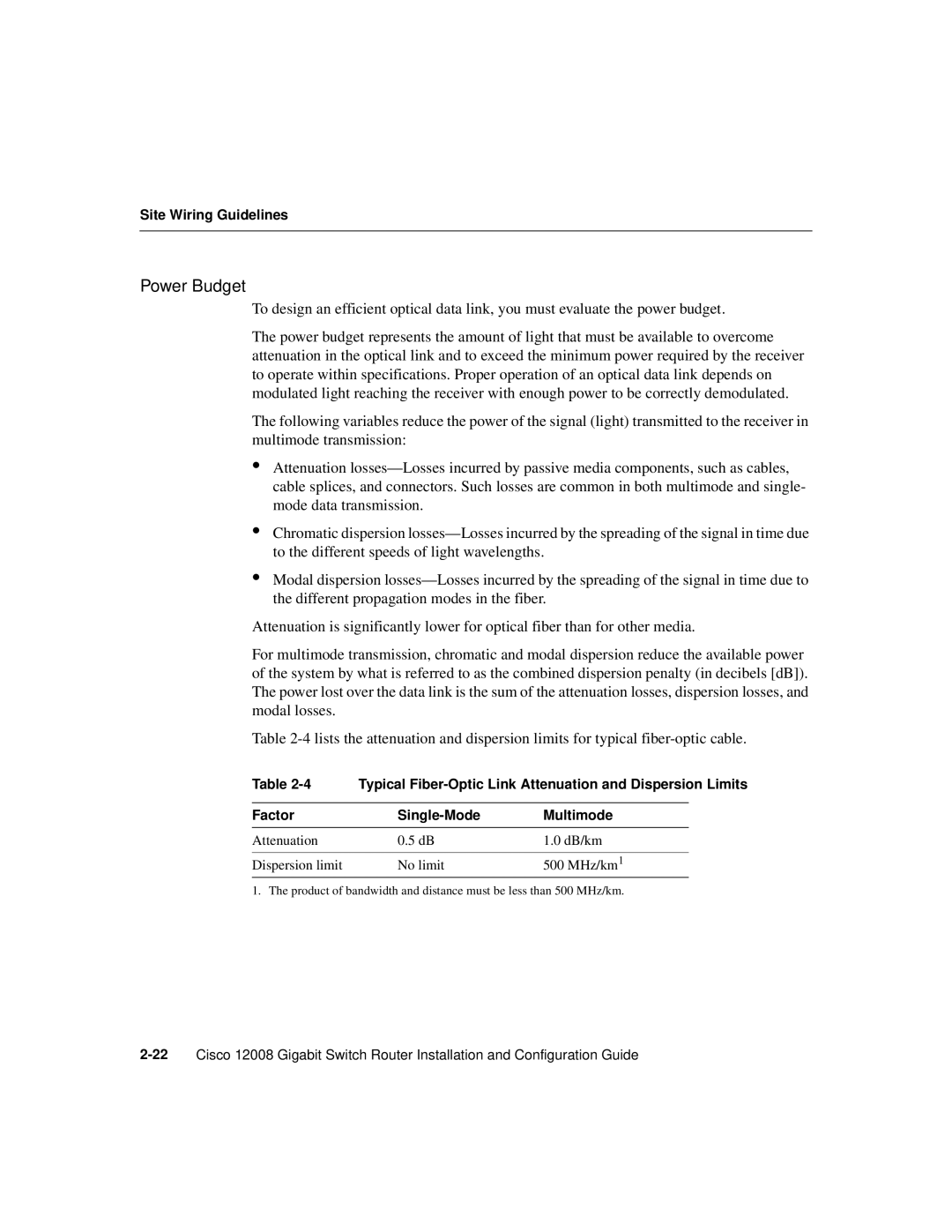Site Wiring Guidelines
Power Budget
To design an efficient optical data link, you must evaluate the power budget.
The power budget represents the amount of light that must be available to overcome attenuation in the optical link and to exceed the minimum power required by the receiver to operate within specifications. Proper operation of an optical data link depends on modulated light reaching the receiver with enough power to be correctly demodulated.
The following variables reduce the power of the signal (light) transmitted to the receiver in multimode transmission:
•Attenuation
•Chromatic dispersion
•Modal dispersion
Attenuation is significantly lower for optical fiber than for other media.
For multimode transmission, chromatic and modal dispersion reduce the available power of the system by what is referred to as the combined dispersion penalty (in decibels [dB]). The power lost over the data link is the sum of the attenuation losses, dispersion losses, and modal losses.
Table
Table | Typical | ||
|
|
|
|
Factor |
| Multimode | |
|
|
|
|
Attenuation | 0.5 dB | 1.0 dB/km | |
|
|
|
|
Dispersion limit | No limit | 500 MHz/km1 |
|
1. The product of bandwidth and distance must be less than 500 MHz/km.
